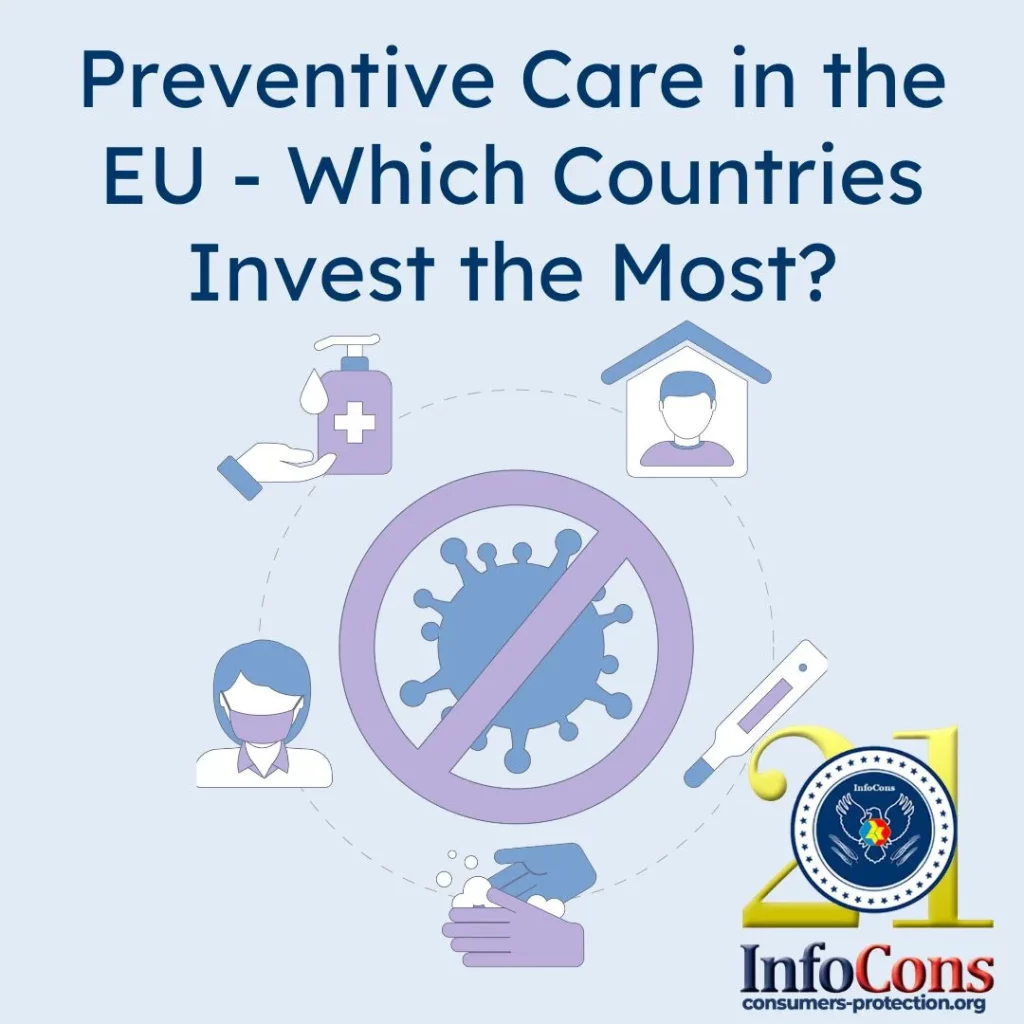
Preventive healthcare plays a crucial role in reducing the burden of diseases and improving overall public health. Over the past few years, the COVID-19 pandemic significantly influenced how EU countries allocated healthcare funds, with a notable increase in spending on preventive measures such as vaccination campaigns, public awareness programs, and early detection initiatives.
By 2022, preventive healthcare expenditure accounted for 5.5% of total healthcare spending across the EU. Although this represents a decline from the 6.1% recorded in 2021, it remains well above pre-pandemic levels, indicating a continued focus on disease prevention strategies.
How Preventive Healthcare Spending Has Evolved
Before the pandemic, investment in preventive care was relatively low, making up 2.9% of total healthcare spending in 2019. In response to COVID-19, this figure rose to 3.5% in 2020, peaking at 6.1% in 2021 as governments intensified public health measures. Although spending slightly decreased in 2022, the higher-than-usual share suggests a long-term shift toward prioritizing prevention.
Read also : New Guidelines for Water Use in Food Processing to Prevent Contamination
Which EU Countries Invest the Most in Prevention?
Preventive healthcare spending varies significantly across EU member states. In 2022, the countries that allocated the highest share of their total healthcare budgets to prevention were:
These nations have consistently prioritized disease prevention through public health programs, screenings, and vaccination efforts.
On the other hand, the lowest shares were reported in:
This indicates that some EU countries still allocate limited resources to preventive care, potentially missing opportunities to reduce the long-term costs of treating preventable diseases.
Read also : The EU’s Shift Towards Greater Sustainable Competitiveness
Per Capita Spending: Where Does the Most Money Go?
When looking at preventive care expenditure per capita, Germany again led the rankings, with €458 spent per inhabitant in 2022. Other top spenders included:
- Austria – €411 per inhabitant
- Netherlands – €312 per inhabitant
In contrast, the lowest per capita investments in preventive healthcare were recorded in:
This highlights significant disparities in healthcare funding across the EU, raising concerns about inequalities in access to preventive care and public health resources.
Read also : Winter Tips for Avoiding Frozen and Burst Pipes in Your Home
Investing in Prevention for a Healthier Future
Despite a slight decline in 2022, the share of preventive healthcare spending in the EU remains higher than pre-pandemic levels. Countries that continue to prioritize prevention through vaccinations, early screenings, and public health programs are likely to see long-term benefits, including lower healthcare costs and improved population health.
However, the stark differences in spending across EU countries suggest that more work is needed to ensure equitable access to preventive healthcare. Strengthening investments in disease prevention, health promotion, and early intervention will be essential in shaping a healthier and more resilient Europe.
Source : Eurostat
InfoCons – European Organization for Consumer Protection and Promotion of Programs and Strategies , a full member of the World Organization Consumers International, founding member of the Federation of Consumer Associations, and member of ANEC .